Very often we can hear a standard phrase said by different people: “In our age of high technology…” Well, we do live in the age of high technology, and the latter becomes further more advanced. This is how our civilization is developing. We are surrounded with technologies and have plenty of appliances in our houses and apartments, intended to facilitate our existence on this planet and make it more comfortable, although existence remains mere existence, no matter whether you run about with a stick in your hand or a cell phone in your pocket.
Present-day humanity prefers to lie comfortably on a couch in the evening, take a stick called the remote control, press the button and plunge into the world of coloured pictures in the box that occupies the most honourable place in many contemporary homes. Others prefer spending their evenings in pleasant talks with those who are not near, and other boxes are available to assist them. Communication between box-holders has become very popular, and diverse kinds of magic boxes are already an integral part of human everyday life.
Hence, looking into their boxes in the evening, modern humanity has forgotten about stars that live in the sky and sing a nice song there when the Sun leaves for the night.
Once upon a time people had no magic boxes and listened to the stars. They saw how a star appeared in the sky, then other stars joined it, and together they made a beautiful celestial pattern. However, I have digressed from the subject as usual. Let’s go back to our boxes. Well, if modern people would desire, magic high-technology boxes can help them observe the stars, which in my opinion is much more interesting than idle evening talks or remotely controlled coloured pictures.
So, let’s get to the point. For a start, let us see what we can stuff into our magic phone box. There is a mobile application called Star Chart. Here is some information about it:
Peculiarities:
“Upon first launch, Star Chart will request permission to use your GPS data, or you will have to indicate your location manually. The first option is surely better, thus the data will be as precise as possible.
Switch on the GPS sensor and direct your smartphone at the sky. As you move the smartphone, the sky on the display will move accordingly. That is, wherever you direct your smartphone, you will observe a relevant section of the sky on the display. Now, imagine what a nice time you can have if you direct your smartphone at the sky at night and finally understand how the constellations of Aquarius, Leo, Scorpio, and hundreds of others really look. While previously you had to use special atlases and look out for points in order to learn all this, with Star Chart you need nothing but the application itself.”
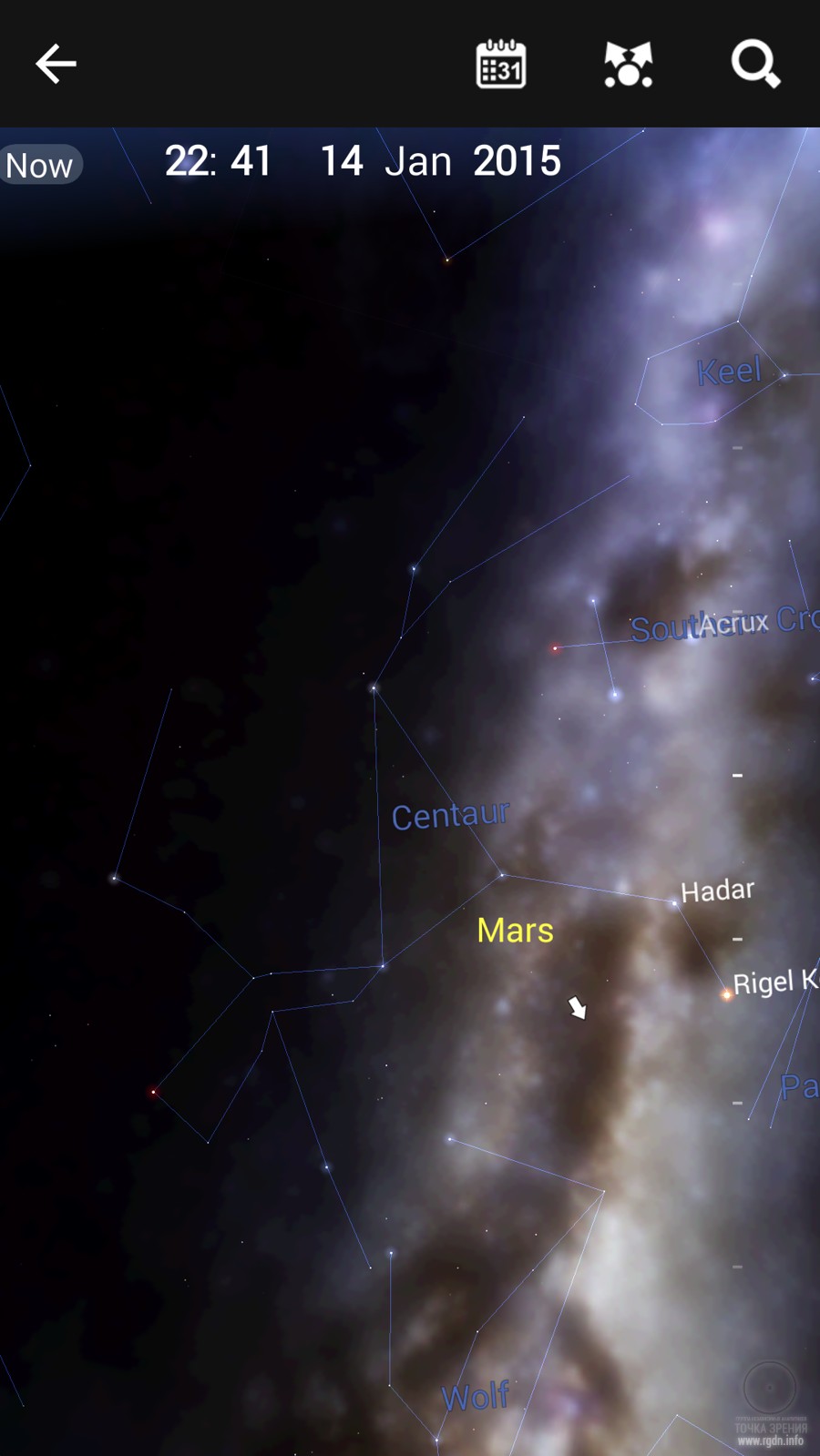
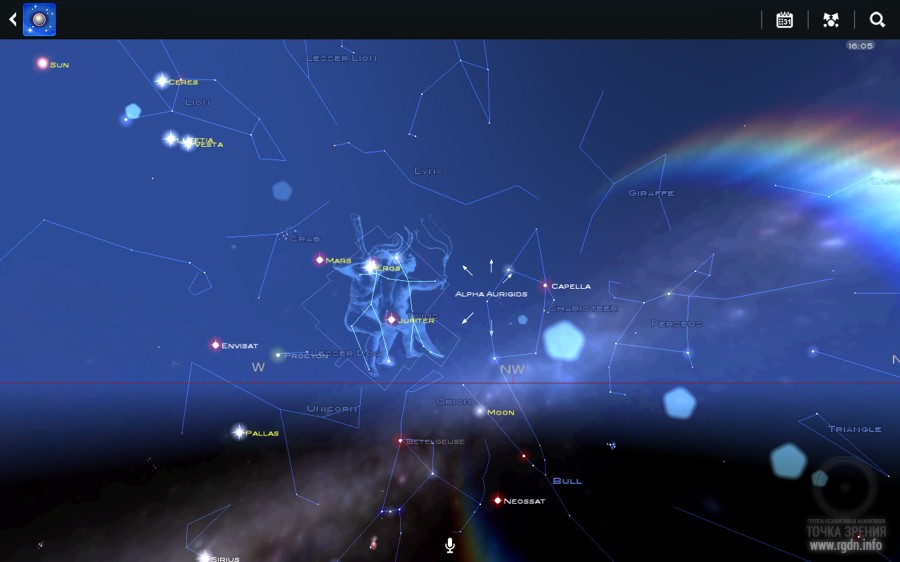
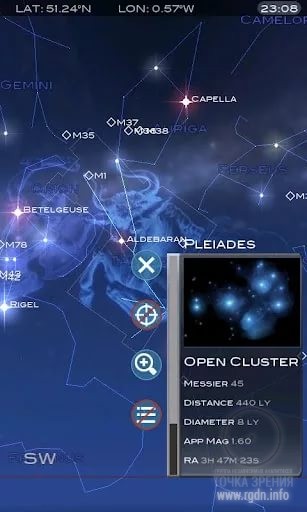
In my opinion, this application is a perfect pocket planetarium. You can download it on your phone and start familiarising yourself with the constellations. If you use GPS, your location will be determined automatically, or you can enter your coordinates manually. There is a timescale that enables you to observe movement of a star or constellation over time, i.e. you can see when one or another constellation appears in the sky in your area, and when it disappears beyond the horizon.
As for directing your phone at the sky in order to see a constellation or star, I can say the following. If you do know the constellation or star of your interest, then, when you direct your phone at it, you will probably see it. However, if it is unfamiliar to you, you will hardly see it because the phone is small whereas the sky is enormous. Nonetheless, you can try and maybe you will get the hand of doing this.
Now, let us switch over to the internet. There is a rather interesting web resource called Spacegid. It contains plenty of diverse information about space and stars, various articles and interactive models, descriptions of stars, constellations and galaxies. Here’s a link to the resource: http://spacegid.com
Among other things, this website contains a 3D model of the Solar System for children and adults. It is quite simple, and even a 10-year-old child can use and understand it without any difficulty.
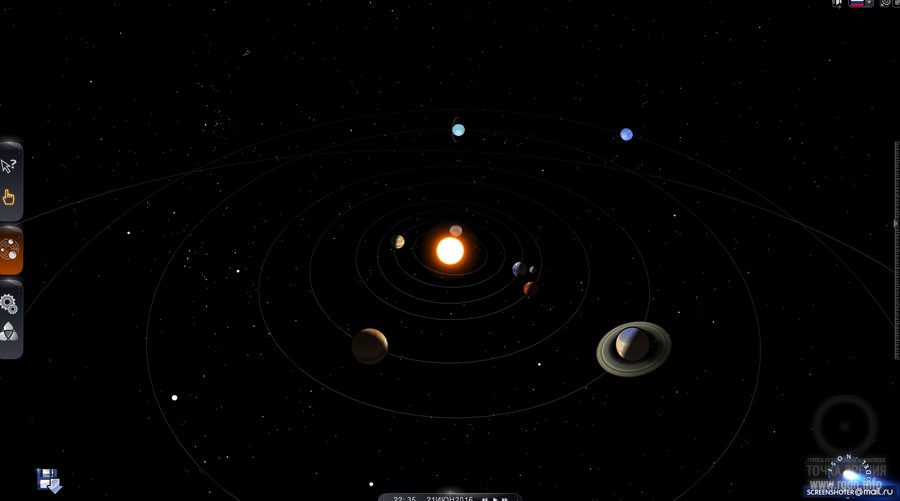
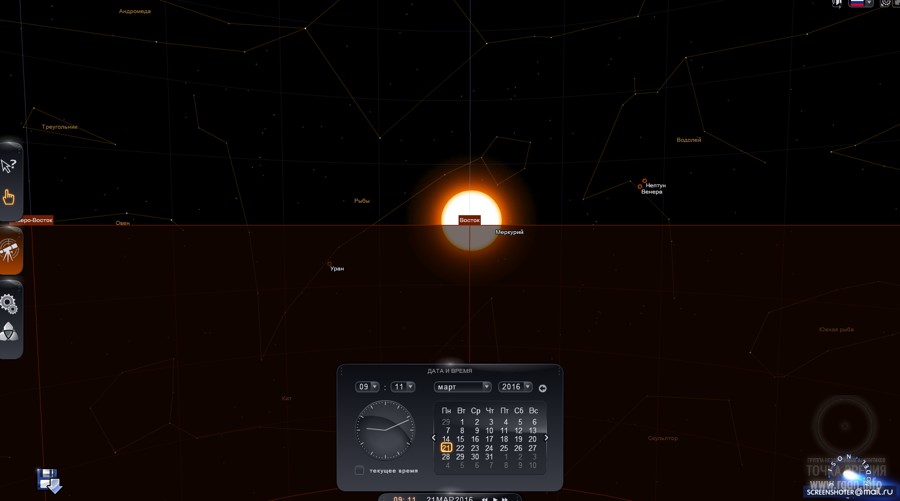

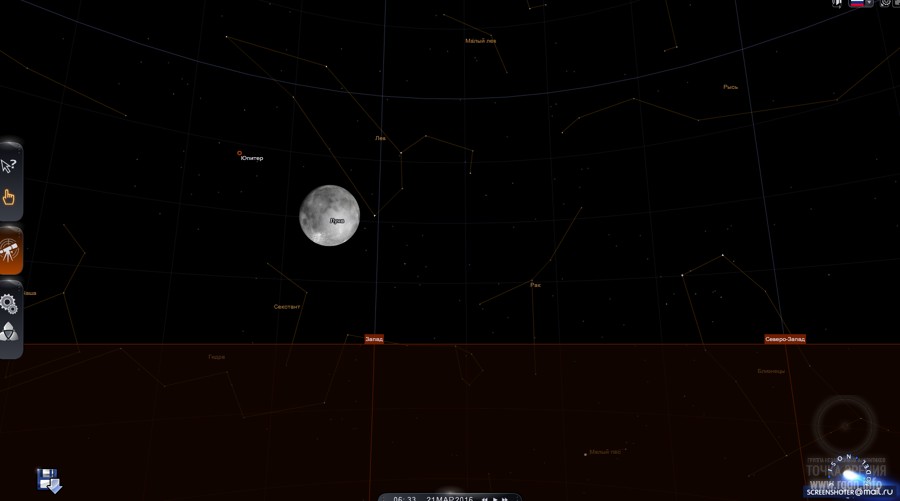
Here is a video on the Solar System model. It shows the point of sunrise on the 21st day of every month.
Now we have come up to the most important thing. It is Stellarium software used by many astronomy lovers, not only amateurs.
A brief description:
Stellarium is a free open source planetarium for your computer. It shows a realistic sky in 3D, just like what you see with the naked eye, binoculars or a telescope.
It is being used in planetarium projectors. Just set your coordinates and go.
Sky
Interface
Visualisation
Starting from Stellarium 0.8.0, the software is available in more than 40 languages (including Russian).
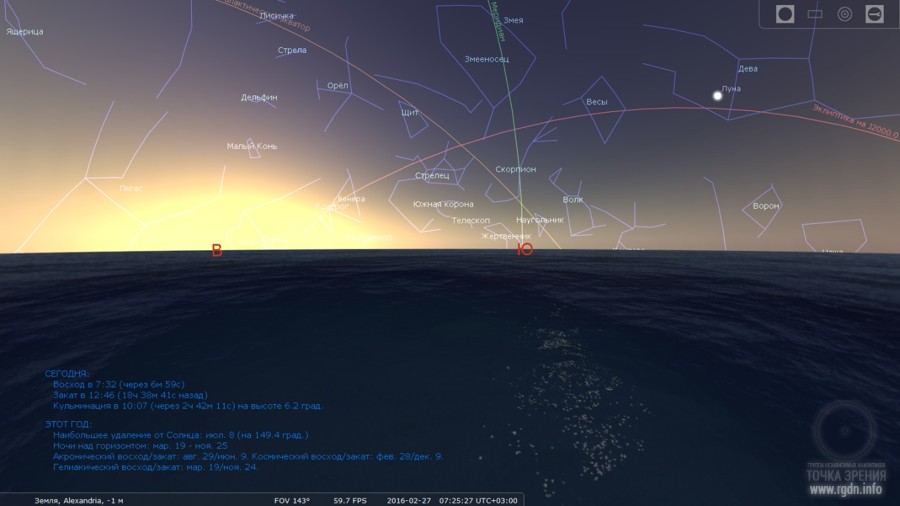
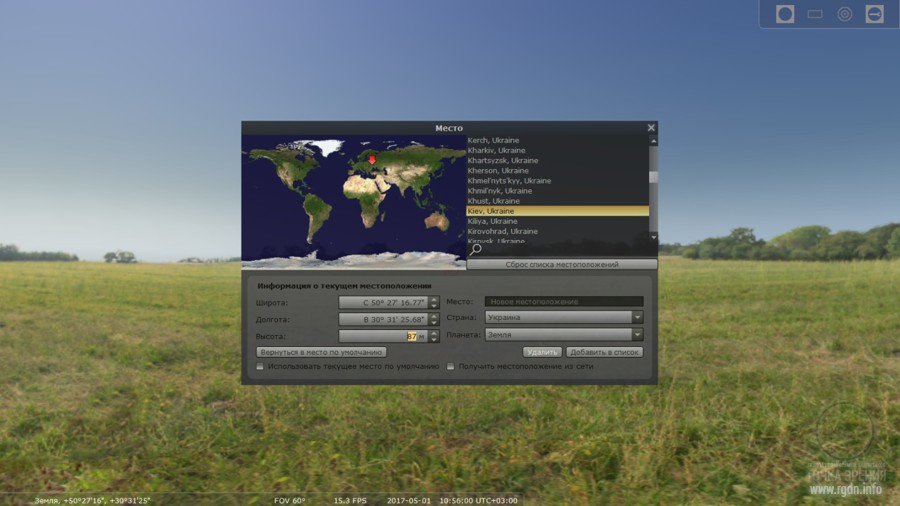
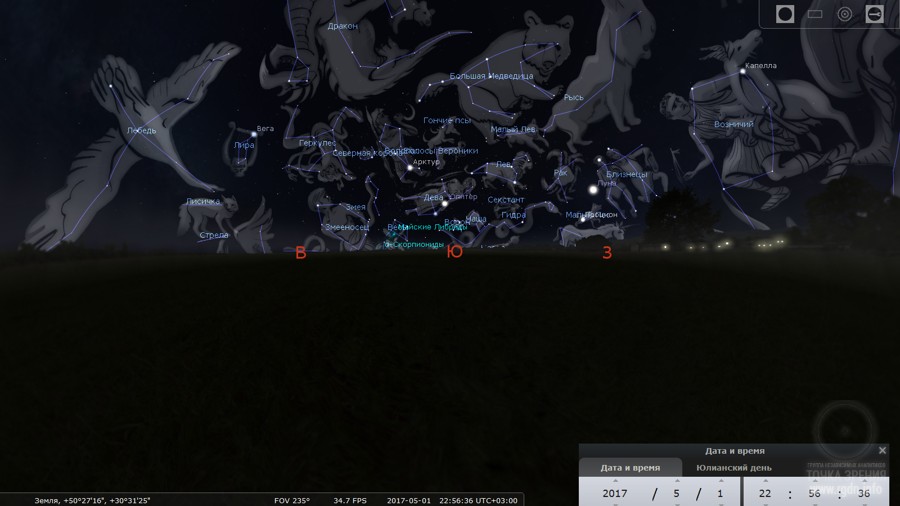
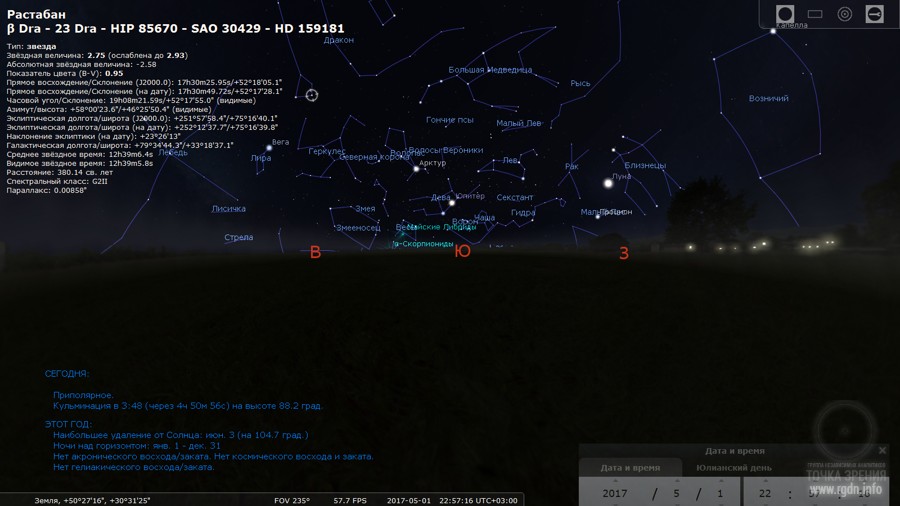
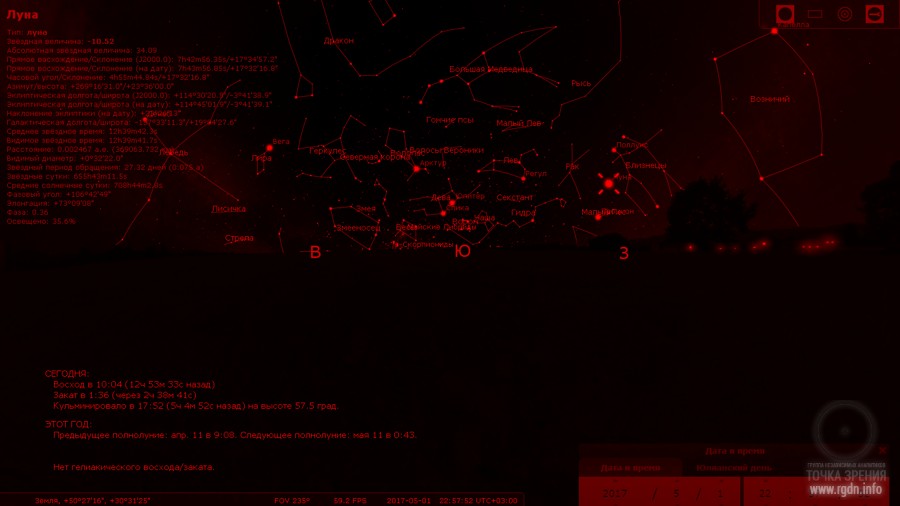

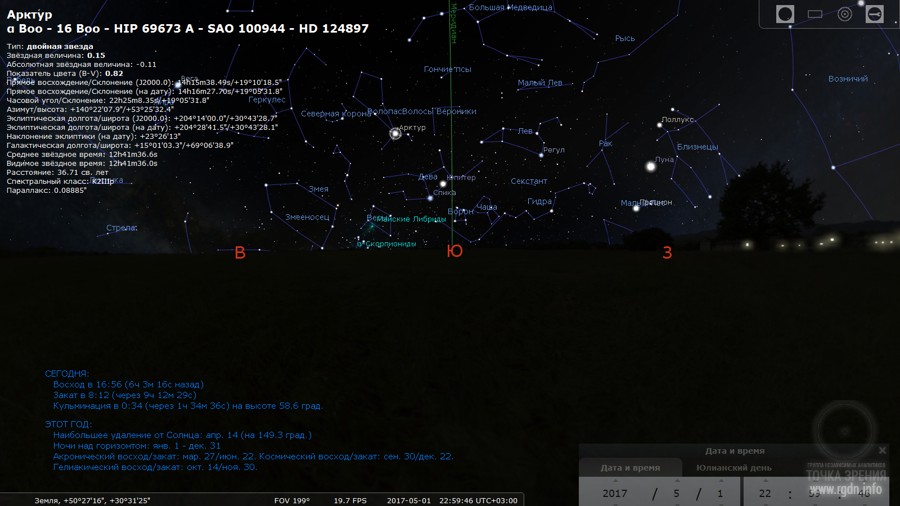
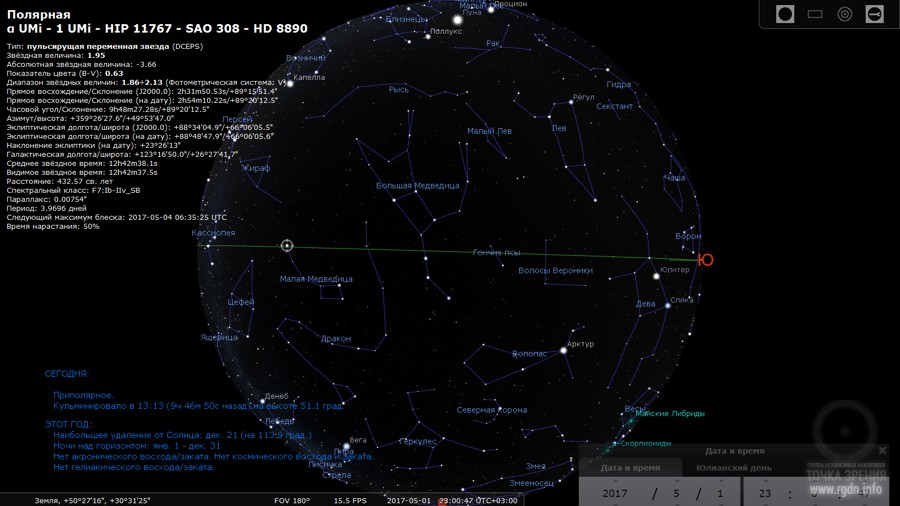
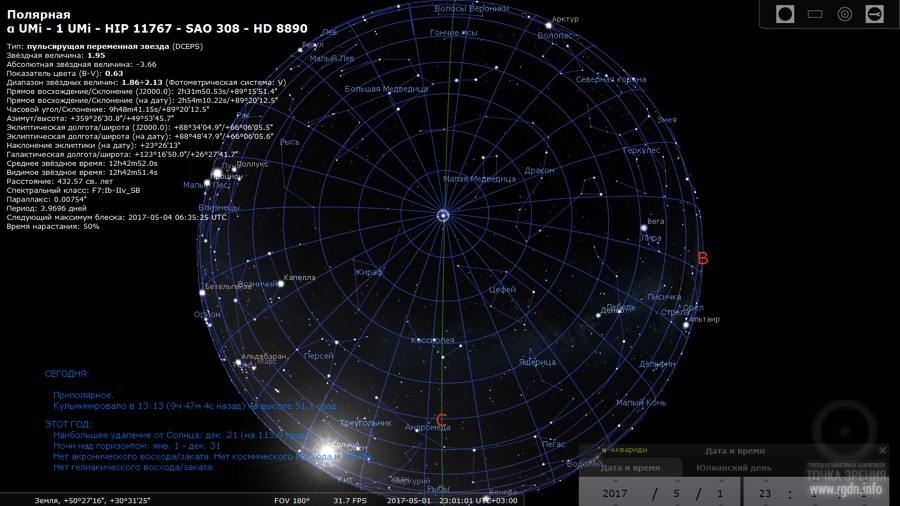
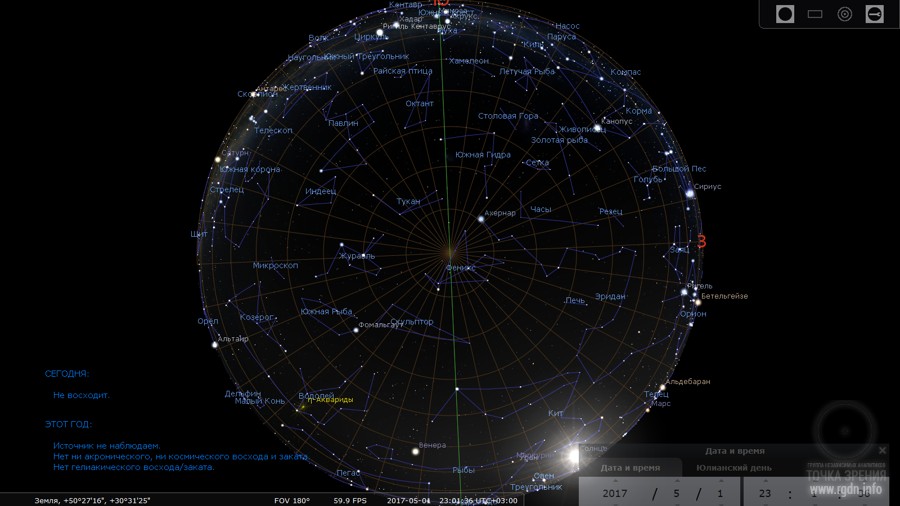
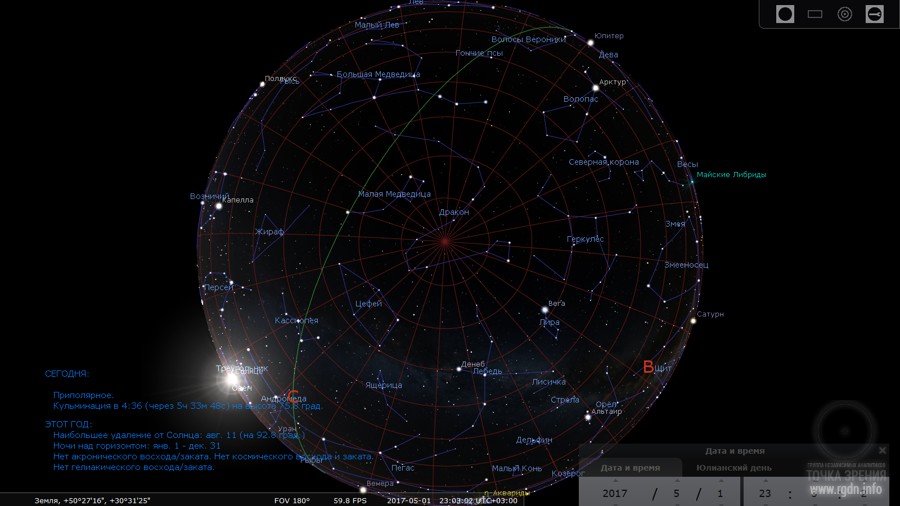
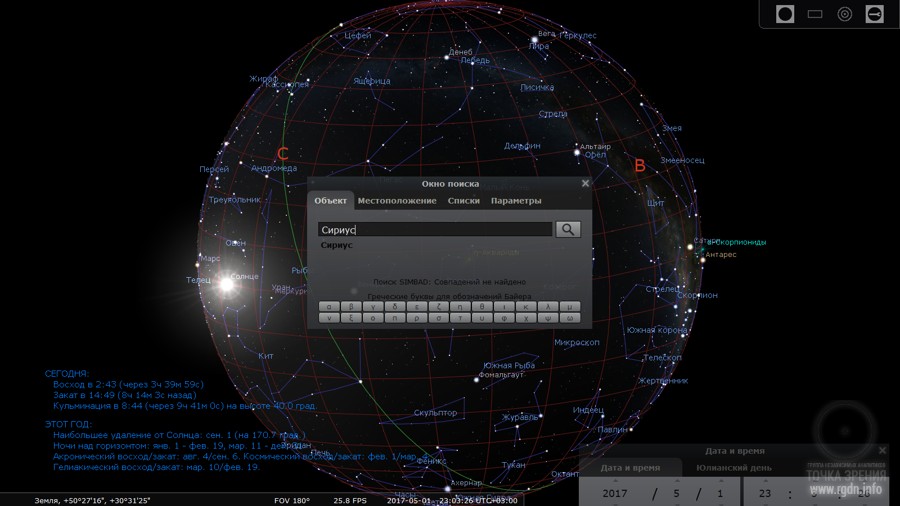
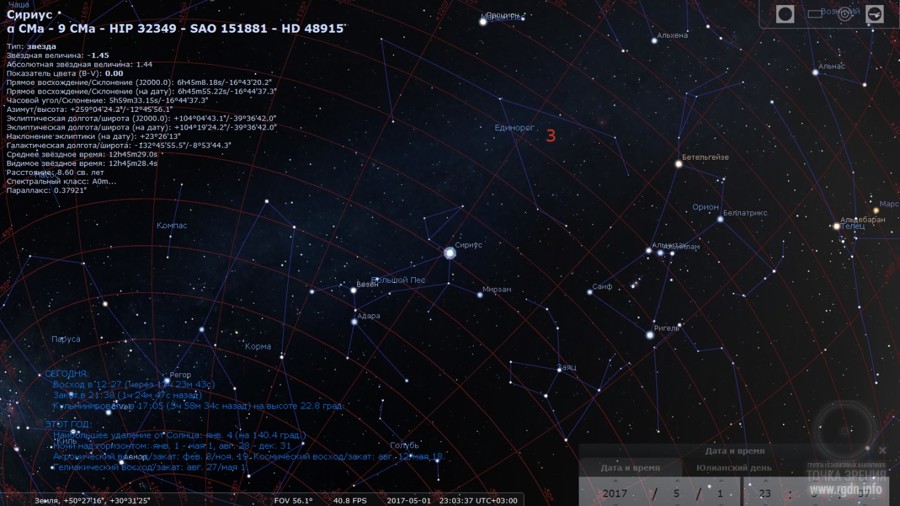
In my opinion, it’s a very nice software, quite simple to cope with, and like Spacegid it is suitable for both children and adults. Just download it, open and explore the menu attentively. You may set a date and observe location and movement of stars and constellations even thousands of years ago.
By pressing on a star of your interest, you can view information about it: stellar magnitude, distance, spectral type, right ascension / declination, etc. You may view the conditions of the star visibility: rising, setting, time and height of culmination. Moreover, you can trace daily and annual movement of stars, and certainly familiarise yourselves with stars and constellations, including those you have never heard about before.
Below, let me present videos on Stellarium software. The last video shows annual movement of the Sun as well as the two solstice points (in summer and in winter) nowadays and about 13,000 years ago. This video was given in a comment to the article The ruin of the Clovis culture and the riddle of the Younger Dryas.
As a conclusion, let me note these are only several tools to observe stars and constellations. Actually, there are plenty of tools like that, and everyone can choose the most suitable for himself or herself, should they have a desire to observe the sky.
Yet, a better way is to go outside in the evening or at night and turn one’s eyes towards the sky, for there are no man-made tools or software that could match the beauty created by the Lord!
Good luck to you in examination of the stellar sky, dear astronomy lovers!
Prepared by Igor (Vyatka)
P.S. (by the Editor-in-Chief)
This article opens a new Astronomy section on our website. We will endeavour to look a little further than our TV sets, smartphones and stone yards may offer. Who knows what we will see there? Perhaps, we will recall, unravel or realise something indeed important. In any case, this is much more interesting than a freshly announced Hollywood thriller. Stay with us.
 Stars in the pocket and on the table
votes:
267
Stars in the pocket and on the table
votes:
267
|

Project Aim










Leave comment